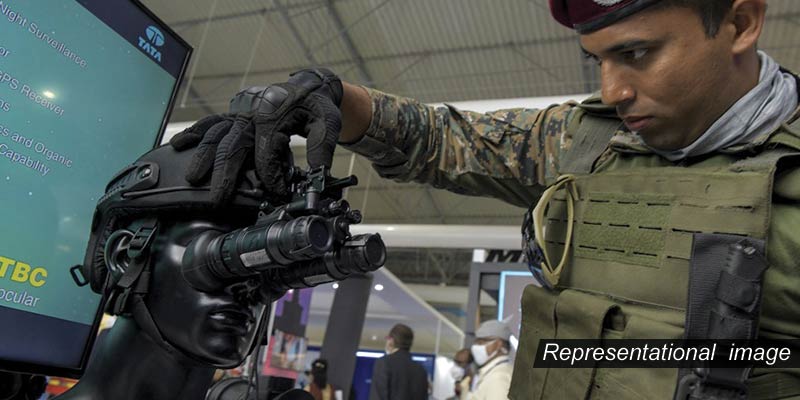- India
- Apr 12
Explainer - What is defence attache?
For the first time, India will post defence attaches in several countries including Ethiopia, Mozambique, Ivory Coast, Philippines, Armenia and Poland in line with its broader policy initiative to expand strategic ties with key regions.
India is also appointing an additional defence attache to the African nation of Djibouti that serves as a major maritime gateway around the Red Sea and Gulf of Aden.
The new defence attache in Djibouti will be the second one to hold the post in the island nation.
What is a defence attache?
• A defence attache (attaché) is a member of the armed forces who serves in an embassy as a representative of his/her country’s defence establishment abroad and in this capacity enjoys diplomatic status and immunity.
• Defence attache is a generic term that covers personnel from all branches of the armed services, although some larger countries may appoint an attaché to represent an individual service branch, such as an air force or naval attache.
• The defence attache is usually responsible for all aspects of bilateral military and defence relations.
• Some countries also deploy attaches to work on other security issues, such as migration or police and justice matters.
• Members of a country’s armed forces may also serve as part of a military mission to a regional organisation such as North Atlantic Treaty Organisation (NATO), the European Union, Economic Community of West African States (ECOWAS) or the UN.
• These persons are usually designated “military advisors” or “heads of mission”. Such assignments are mainly multilateral in nature, whereas the defence attache system centres on the bilateral relationship between military establishments.
What is the role of defence attache?
A defence attache:
i) Is an advocate for his/her country’s military and security interests.
ii) Represents his/her country’s military authorities and liaises with those of the host country.
iii) Provides a security-policy and military network capable of operating even in times of troubled or reduced bilateral relations.
iv) Acts as a military and/or security advisor to his/ her ambassador and embassy staff.
v) Observes conditions in the host country with a bearing on security and reports on them to home country authorities.
vi) Oversees and manages activities in the area of military outreach, defence diplomacy and security cooperation, both in bilateral exchanges and through multilateral programmes.
vii) Promotes the home country armaments industry.
viii) May play a role in spearheading emergency response and relief efforts when crises arise.
Diplomatic immunity to defence attaches
• The Vienna Convention on Diplomatic Relations of 1961 provides immunity to persons according to their rank in a diplomatic mission.
• It defines the legal status of the defence attache in article 7: Subject to the provisions of articles 5, 8, 9 and 11, the sending State may freely appoint the members of the staff of the mission. In the case of military, naval or air attaches, the receiving State may require their names to be submitted beforehand, for its approval.
• Hence, under the Convention, defence attaches are considered as members of the diplomatic staff enjoying full immunity.
Origin of the post
• The defence attache emerged during the 17th century at the time of the Thirty Years’ War in Europe when the Duke of Richelieu dispatched military officers abroad to liaise with allied powers, monitor military developments and gather intelligence.
• In the 18th century, the practice of assigning defence attaches to embassies was initiated.
• By the 19th century, most countries were using defence attaches, a trend encouraged by the emergence of national defence establishments and the building of colonial empires.
• The 20th century brought dramatic changes in the number and background of defence attaches.
• As the century unfolded, the need for attaches was reinforced by the growing number of States, the increasingly complex nature of their weapons systems and the enhanced importance of intelligence gathering.
• In 1961, the rights and responsibilities of diplomats were codified in the Vienna Convention, and defence attaches were given the same status.
• Changes in the security environment since the end of the Cold War have made the defence attache’s role considerably more challenging and given him/her a key role in national defence diplomacy.
• The attache’s range of relationships and task load have broadened accordingly, and the demands on his/her technical expertise and political skills have grown.
India expands strategic presence
• It is also learnt that New Delhi is planning to rationalise the strength of its teams of military officials in its embassy in Moscow and high commission in London.
• A few of the defence attaches posted in these two countries are set to be deployed elsewhere as part of the rationalisation process that factored in various aspects of New Delhi’s foreign policy priorities and optimum use of manpower.
• The decision to appoint defence attaches in African countries of Ethiopia, Mozambique and Ivory Coast is in sync with New Delhi’s priority to expand its strategic engagement with the African continent.
• Several African countries have already expressed keen interest in procuring Indian military platforms, equipment and hardware.
• The decision to appoint a defence attache in Armenia comes as the country in the Caucasus region shows deep interest in enhancing its defence relations with India. Last year, an arms deal to supply Indian military hardware including multi-barrel rocket launchers to Armenia was firmed up. The deal came amid the Armenia-Azerbaijan clash over Nagorno-Karabakh.
• India’s decision to appoint a defence attache to Poland, which is a member of the European Union, is also being considered significant. It is reflective of the desire to expand two-way defence ties.
• Last year, the European Union (EU) posted a military attache to its mission in India for the first time.
Manorama Yearbook app is now available on Google Play Store and iOS App Store

